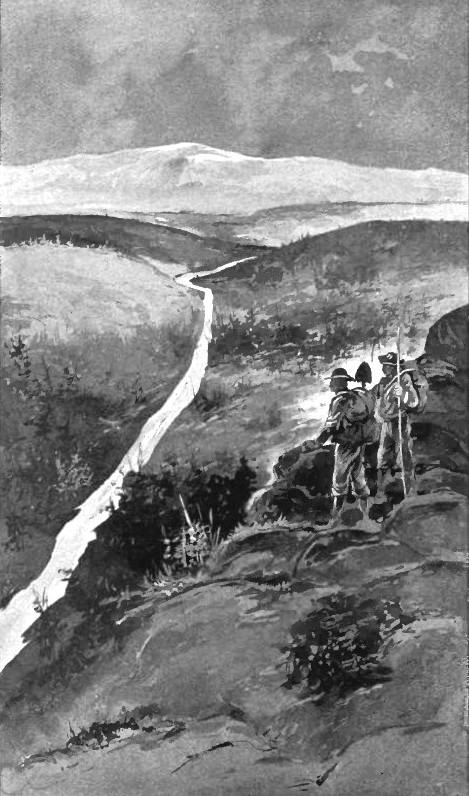SPAIN. Lead ores occur abundantly in southern Spain. Argentiferous lead ore is mined in the provinces of Murcia, Ciudad Real, and Almeria ; and ordinary lead ore in the provinces of Jaen, Cordova, and Badajos. In the Cartagena district of Murcia, there are veins of argentiferous galena of Tertiary age in Triassic limestones and shales. The argentiferous galena in the unaltered veins is associated with sphalerite, pyrite, and chalcopyrite. Another type of deposit met with in Cartagena and also in the Mazarron district, has the appearance of a bedded deposit, and is interstratified with Triassic shales. In this type the ore minerals are argentiferous galena and sphalerite, associated with pyrite, chalcopyrite, quartz, barite, and siderite, and the deposits have arisen by replacement (metasomatism). Farther north, in the Linares district of the province of Jaen, and on the south of the Sierra Morena, veins of rich lead ore traverse the Lower Palaeozoic slates and quartzite, as well as the granites that are intrusive in these strata. The Linares veins are characterized by the abundance of galena and the scarcity of sphalerite. The galena is associated with dolomite, siderite, barite, and plenty of quartz. In the weathering zone cerussite is abundant, associated with iron and copper carbonates, lead phosphate, barite and calcite. The veins are confined to the Palaeozoic beds, and are not found in the overlying Triassic and younger rocks.
GERMANY and POLAND. Lead ore is mined in Poland and the Harz, and less extensively in the provinces of Rhenish Prussia, Nassau, and Westphalia. In Upper Poland lead ores are found in the folded Muschelkalk (Triassic) dolomitic limestones. Where fresh, the ore minerals consist of sphalerite and galena associated with pyrite. In the weathered zone the ore minerals are smithsonite and cerussite, and the pyrite is oxidized to limonite. The galena of Tarnowitz contains 0.03 to 0.04 percent silver. In the Clausthal district of the Harz, there are veins of lead ore in strata of Devonian and Carboniferous age; they are particularly well developed in the Culm beds, which consist of shales and sandstones and are of Lower Carboniferous age. The chief ore mineral is galena, which is in part silver ore. The galena is associated with sphalerite, pyrite, chalcopyrite, quartz, calcite, dolomite, siderite, and barite.
Important deposits of lead ore occur in the Aix-la-Chapelle (Aachen) district of Rhenish Prussia. Here the ore-bodies consist partly of veins and partly of irregular replacements in Devonian and Carboniferous limestones. Galena, and sphalerite are the ore minerals of the unaltered deposits, but cerussite and smithsonite are abundant in the upper levels.The rocks of the Freiberg mining-field of Saxony consist chiefly of biotite-gneiss with some mica-schist, and in these granite and porphyry occur as intrusives. A complex series of veins traverse these rocks. Some of the veins carry argentiferous galena and sphalerite associated with pyrite, arsenopyrite, chalcopyrite, quartz, calcite, siderite, and barite. The weathered zone of these deposits is rich in secondary silver ore minerals and native silver, and has yielded an abundance of this metal. At Ems and Holzappel in Nassau, veins of lead-zinc ore occur in Devonian slates and sandstones. The ore minerals are argentiferous galena and sphalerite, associated with pyrite, chalcopyrite, calcite, dolomite, siderite, and abundant quartz. The crude ore contains about 20 per cent, of zinc, 4 of lead, and 2 oz. of silver per ton.
AUSTRALIA. In Australia the chief occurrence is that of the silver lead zinc ore deposit of Broken Hill in the Barrier district of New South Wales, which is one of the largest and most important deposits in the world. Broken Hill is an anticlinal ridge; the rocks of which are highly metamorphosed and consist of gneiss, schist, and quartzite of supposed pre-Cambrian age traversed by intrusions of granite and diorite. The lode extends along the summit of the anticline, and is regarded by some authorities as a saddle-reef formation, but other authorities do not accept this view. The unaltered ore now being worked consists of argentiferous galena and ferriferous sphalerite associated with pyrite, chalcopyrite, rhodonite, quartz, garnet, and felspar, together with small amounts of fluorite, arsenopyrite, and wulfenite. The ore contains from 5 to 50 percent lead, 14 to 30 percent, of zinc, 6 to 36 oz. of silver per ton, and 2 to 3 dwts. of gold per ton. In the oxidized zone cerussite and halogen compounds of silver were abundant, and the outcrop consisted chiefly of manganiferous limonite. The cerussite ore originally worked carried as much as 60 per cent, of lead, and 300 oz. of silver per ton. The ore has been removed at the outcrop by an open cut 20 to 100 ft. wide, for a distance of about a mile and a half along the ridge.
MEXICO. The chief lead-producing districts of Mexico are those of Mapimi, Santa Eulalia, and Sierra Mojada. These Mexican occurrences are remarkable as furnishing instances of pipe-like deposits in Cretaceous limestone. A deposit of this type occurs at the Ojuela mine in the Mapimi district, where the pipe extends downwards for several hundred feet, and has a thickness of about 130 ft. The ore minerals are galena and sphalerite, associated with pyrite, chalcopyrite, arsenopyrite, stibnite, magnetite, quartz, calcite, siderite, dialogite, fluorite, and barite.
BRITISH ISLES. Argentiferous lead ore is mined at numerous localities in the British Isles. The most productive mines are in Derbyshire, Flintshire, Durham, Lanarkshire, Dumfriesshire, Westmorland, and the Isle of Man. In Derbyshire, Durham, Westmorland, Flintshire, and Dumfriesshire the veins occur chiefly in Carboniferous strata. Limestone seems to provide especially favorable conditions for the precipitation of lead ores, as is well seen in Derbyshire, where the limestones are interbedded with "toadstones" (basic igneous rocks), and are overlain by Millstone grit. The veins are productive where they traverse the limestone, and become unproductive where they traverse the "toadstone" and the Millstone grit. Calcite, fluorite, sphalerite, and siderite are associated with the galena in these veins, and the fluorite is sufficiently abundant in some cases to form an important by product in mining. At Foxdale in the Isle of Man the lead ore occurs as veins in granite, associated with quartz, pyrite, and pseudomorphs of iron carbonate after fluorite. At Laxey, also in the Isle of Man, galena occurs in Ordovician slates associated with sphalerite and copper sulphides, and the galena is rich silver ore. At many localities in Wales, Shropshire, Devonshire, and Cornwall, galena occurs in veins which traverse Lower Palaeozoic rocks (shales, slates, and flagstones) and is frequently associated with sphalerite, pyrite, quartz, barite, fluorite, and copper ores.
Return
to Metal Ores Page:
Precious and Base Metal Ores


